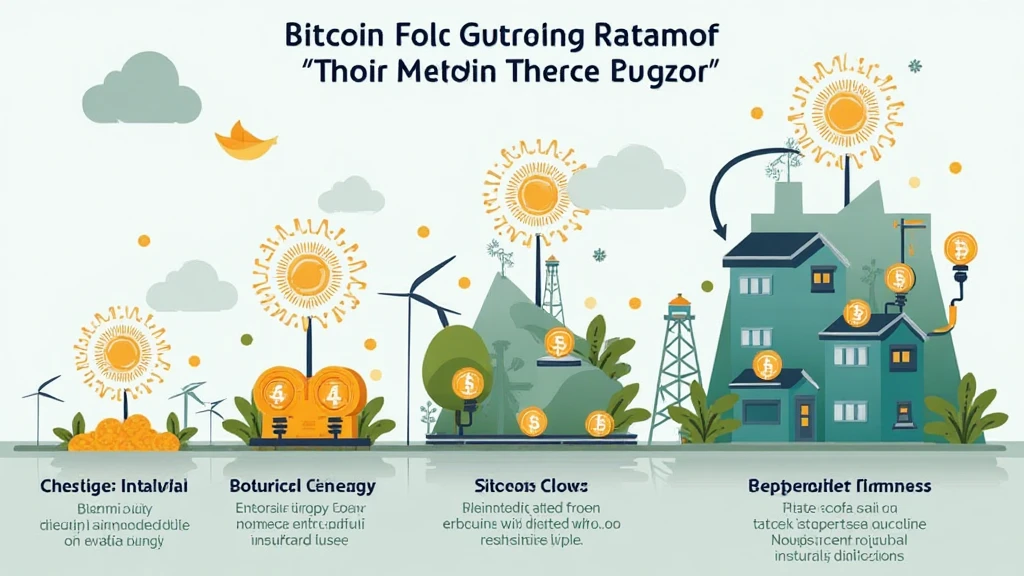Bitcoin Mining Energy Sources: Understanding the Future
With the surge in Bitcoin prices, the mining sector is busier than ever, raising critical discussions around its energy consumption. As of 2024, Bitcoin mining consumes approximately 100 terawatt-hours annually, equivalent to the electricity usage of the entire country of the Netherlands per year. This staggering figure prompts an urgent exploration of viable energy sources for Bitcoin mining.
This article delves into the various energy sources powering Bitcoin mining, considering their sustainability and future implications for the cryptocurrency landscape in 2025 and beyond.
Understanding Bitcoin Mining
Before we dive into energy sources, let’s clarify what Bitcoin mining entails. Bitcoin mining is the process of validating transactions on the blockchain, involving complex mathematical computations solved by miners using powerful hardware. Each transaction is bundled into a block, and miners compete to solve these blocks to be rewarded in Bitcoin.

How Bitcoin Mining Works
- Miners use computational power to solve cryptographic puzzles.
- Successful miners add blocks to the Bitcoin blockchain.
- They receive a Bitcoin reward, along with transaction fees.
Energy Sources for Bitcoin Mining
The energy landscape for Bitcoin mining is diverse, with several sources being harnessed to power mining operations:
1. Renewable Energy
Renewable energy sources are becoming increasingly popular in Bitcoin mining.
- Hydropower: Utilizing water movement, hydropower is a major energy source for Bitcoin miners, especially in regions with abundant water resources.
- Solar Energy: With sharp declines in solar panel prices, many miners are turning to solar farms to power their operations.
- Wind Energy: Wind farms provide another sustainable option, often paired with energy storage solutions.
According to the Global Wind Energy Council, the wind energy market is expected to grow by 12% annually through 2025. This growth may make wind more prevalent in Bitcoin mining operations.
2. Natural Gas
Natural gas is a bridge fuel transitioning miners to greener inputs:
- Natural Gas is often utilized in remote mining camps where traditional electricity access may be limited.
- Mining operations in the U.S. have reported lower costs with this energy source, making mining more profitable.
In Vietnam, the increasing user adoption of Bitcoin indicates a potential for natural gas mining setups in remote areas with limited access to the grid.
3. Fossil Fuels
Despite the clear environmental impacts, fossil fuels still play a major role in Bitcoin mining due to their availability and reliability.
- Coal and oil remain commonly used in regions where renewable alternatives are not accessible.
- This trend has drawn significant criticism over emissions, pushing the industry towards renewable transitions.
Environmental Impacts of Bitcoin Mining
The rise of Bitcoin mining has sparked debates regarding its environmental impact. Here’s what the latest data suggests:
- As of early 2024, Bitcoin mining contributes more than 0.5% of global electricity consumption, drawing attention from environmentalists.
- Countries like China have imposed bans on Bitcoin mining due to unprecedented energy usage and greenhouse gas emissions.
However, there’s a growing movement toward sustainable practices. For instance, in Vietnam, the government is exploring incentives for operations using renewable energy, likely to benefit the local landscape.
Investing in Green Bitcoin Mining
Investors are increasingly pushing for a green revolution within the Bitcoin mining community. Here are a few approaches:
- Investing in companies that prioritize renewable energy use.
- Funding innovative technologies like energy recycling and boosted efficiency measures.
Blockchain companies are beginning to adopt these practices, with outcomes expected by 2025, indicating a shift in industry standards.
The Future of Bitcoin Mining Energy Sources
Looking forward, the energy landscape for Bitcoin mining in 2025 is likely to encompass a mix of the following:
- Diverse Energy Portfolio: Combining renewables, natural gas, and possibly emerging clean technologies.
- Technological Innovation: Continued advancements in mining hardware efficiency will help minimize energy consumption.
As regulations tighten and the demand for transparency grows, miners will need to showcase their energy sourcing strategies to align with best practices.
The Role of Regulations
Government regulations are evolving, adapting to the growing concerns over energy consumption:
- Countries are developing policies encouraging the use of renewable energy for mining operations.
- Tax incentives and subsidies for green energy use are being proposed in emerging markets, including Vietnam.
Conclusion
In summary, Bitcoin mining energy sources are a crucial component of both the operational landscape and the environmental debate surrounding cryptocurrency. As we progress towards 2025, the mix of energy sources, driven by efficiency advancements and regulatory frameworks, will shape the future of Bitcoin mining.
For businesses and miners alike, embracing sustainable practices isn’t just ethical—it’s increasingly viable economically. Together, as stakeholders in the Bitcoin community, we can advocate for responsible mining practices, paving the way for a more sustainable future.
ติดตามข่าวสารที่เกี่ยวข้อง: Stay updated with the latest trends in Bitcoin mining energy sources and strategies by checking out officialcryptonews.
Author: Dr. Alex Volkov
Dr. Volkov is an industry-leading blockchain researcher with over 20 published papers and a head auditor for several recognized global projects. His expertise bridges the gap between technology and environmental awareness in cryptocurrency.




